The average cost of Total Hip Replacement B/L in Switzerland starts from CHF 27520 (USD 32000)
You should never wait too long to get hip replacement done because your health deteriorates the longer you wait and the surgery is not so effective. Hip Replacement surgery is of many kinds, the most common ones are Total hip replacement (most common), Partial hip replacement and Hip resurfacing. Total hip replacement is commonly used to treat many conditions such as joint failure which is caused by osteoarthritis, rheumatoid arthritis, traumatic arthritis, hip fractures, avascular necrosis, benign and malignant bone tumors. The worn out or damaged parts of the hip joint are removed and replaced with a new artificial hip joint which is called a prosthesis.
Hip Replacement in Switzerland is a fairly refined and well developed process which has evolved over time. This has led to improvement in the lives of arthritic patients and those who have had injuries. There are many hospitals and clinics providing Hip Replacement in Switzerland. Some of the good ones are listed below, Hirslanden Private Hospital Group, largest medical network in Switzerland, 11 regions of the country Hospital de la Providence, Neuchatel Clinique Valmont of the Swiss Medical network Clinique Générale Beaulieu, a leading private clinic in Geneva, Switzerland Privatklinik Bethanien, Zurich, Switzerland Genolier Hospital, the largest multidisciplinary private hospital in Switzerland Switzerland is not only the most popular tourist destination of the world but also boasts of world class medical infrastructure, the most well trained and professional orthopaedic surgeons and the best of aftercare services.
Hip Replacement cost in Switzerland is US$17,112 which is much lesser than the Hip Replacement cost in USA, i.e., anywhere between US$ 32,000 to US$ 40,000 and plus.
| Country | Cost | Local_currency |
|---|---|---|
| Czechia | USD 8190 | Czechia 185831 |
| Greece | USD 12180 | Greece 11206 |
| Hungary | USD 14000 | Hungary 4879840 |
| India | USD 6280 | India 522182 |
| Israel | USD 41000 | Israel 155800 |
| Lithuania | USD 10520 | Lithuania 9678 |
| Malaysia | USD 30000 | Malaysia 141300 |
| Morocco | USD 30000 | Morocco 301200 |
| Poland | USD 9390 | Poland 37936 |
| South Korea | USD 37000 | South Korea 49679530 |
| Spain | USD 30210 | Spain 27793 |
| Switzerland | USD 32000 | Switzerland 27520 |
| Thailand | USD 19090 | Thailand 680558 |
| Tunisia | USD 21000 | Tunisia 65310 |
| Turkey | USD 16778 | Turkey 505689 |
| United Arab Emirates | USD 30040 | United Arab Emirates 110247 |
| United Kingdom | USD 13360 | United Kingdom 10554 |
Treatment cost

MediGence is offering immense facilities for your medical journey such as:
We provide packages at economical prices with a number of additional benefits which make it a better opportunity than spending actual hospital costs with singular benefits. Bilateral Total Hip Replacement Surgery is an orthopaedic surgery performed to replace a diseased or injured knee on both sides with artificial material. The Prosthesis can restore both the knees where the cartilage has worn away., The Bilateral Total Knee Replacement surgery is quite similar to the Unilateral replacement surgery. However, it might need two surgical teams to perform the surgery on both sides., We are offering the finest Total Hip Replacement Surgery B/L comprehensive and discounted packages, inclusive of all benefits at Sarvodaya Hospital and Research Centre, India.

MediGence is offering immense facilities for your medical journey such as:
We provide packages at economical prices with a number of additional benefits which make it a better opportunity than spending actual hospital costs with singular benefits. Bilateral Total Hip Replacement Surgery is an orthopaedic surgery performed to replace diseased or injured knee of both the sides with an artificial material. The Prosthesis can restore both the knees where the cartilage has worn away., The Bilateral Total Knee Replacement surgery is quite similar to the Unilateral replacement surgery. However, it might need two surgical teams to perform the surgery on both sides., We are offering the finest Total Hip Replacement Surgery B/L comprehensive and discounted packages, inclusive of all benefits at Medicana Camlica Hospital, Turkey.

Apart from in-detail treatment procedures available, Paracelsus Clinic located in Lustmuhle, Switzerland has a wide variety of facilities available for International Patients. Some of the facilities which are provided by them are Accommodation, Airport Transfer, Choice of Meals, Interpreter, SIM, TV inside room. Also listed below are some of the most prominent infrastructural details:

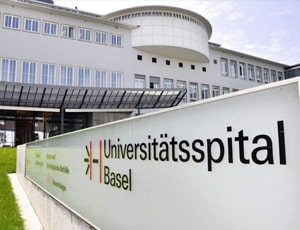
University Hospital located in Basel, Switzerland is accredited by ISO. Also listed below are some of the most prominent infrastructural details:
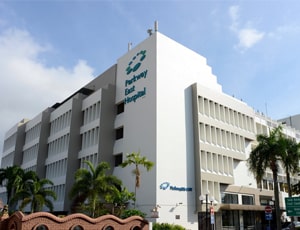
Parkway East Hospital located in Joo Chiat Pl, Singapore is accredited by JCI. Also listed below are some of the most prominent infrastructural details:
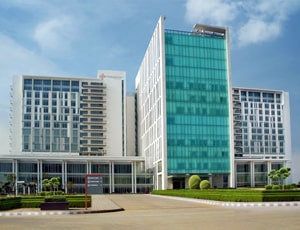
Types of Total Hip Replacement B/L in Medanta - The Medicity and its associated cost
| Treatment Option | Approximate Cost Range (USD) | Approximate Cost Range (INR) |
|---|---|---|
| B/L Total Hip Replacement | 9168 - 13328 | 728062 - 1108182 |
| Cemented Hip Replacement | 9075 - 11325 | 743894 - 926047 |
| Uncemented Hip Replacement | 10251 - 12350 | 820453 - 1006081 |
| Hybrid Hip Replacement | 9446 - 11820 | 776422 - 973082 |
| Minimally Invasive Hip Replacement | 11444 - 13619 | 915733 - 1095361 |
| Robotic-Assisted Hip Replacement | 12622 - 14336 | 1007863 - 1212347 |
| Revision Hip Replacement | 13624 - 16893 | 1084580 - 1384207 |
DOCTORS IN 14 SPECIALITIES
FACILITIES & AMENITIES
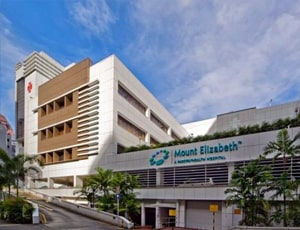
Mount Elizabeth Hospital located in Singapore, Singapore is accredited by JCI. Also listed below are some of the most prominent infrastructural details:
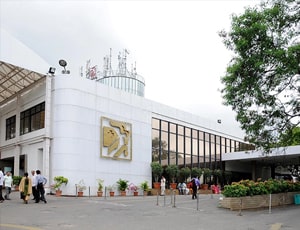
Types of Total Hip Replacement B/L in Apollo Hospitals and its associated cost
| Treatment Option | Approximate Cost Range (USD) | Approximate Cost Range (INR) |
|---|---|---|
| B/L Total Hip Replacement | 8874 - 13392 | 745416 - 1128092 |
| Cemented Hip Replacement | 8835 - 11008 | 728417 - 911380 |
| Uncemented Hip Replacement | 10232 - 12595 | 815214 - 1021419 |
| Hybrid Hip Replacement | 9391 - 11994 | 792896 - 975225 |
| Minimally Invasive Hip Replacement | 11164 - 13269 | 925665 - 1120713 |
| Robotic-Assisted Hip Replacement | 12406 - 14870 | 1028142 - 1184871 |
| Revision Hip Replacement | 13451 - 16963 | 1090750 - 1359147 |
DOCTORS IN 14 SPECIALITIES
FACILITIES & AMENITIES
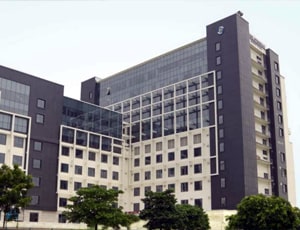
Types of Total Hip Replacement B/L in Venkateshwar Hospital and its associated cost
| Treatment Option | Approximate Cost Range (USD) | Approximate Cost Range (INR) |
|---|---|---|
| B/L Total Hip Replacement | 8084 - 12186 | 668822 - 997629 |
| Cemented Hip Replacement | 8118 - 10130 | 666136 - 831960 |
| Uncemented Hip Replacement | 9149 - 11137 | 752509 - 913613 |
| Hybrid Hip Replacement | 8596 - 10701 | 707915 - 877577 |
| Minimally Invasive Hip Replacement | 10118 - 12202 | 830517 - 995504 |
| Robotic-Assisted Hip Replacement | 11121 - 13142 | 913784 - 1084861 |
| Revision Hip Replacement | 12142 - 15254 | 1000216 - 1250030 |
DOCTORS IN 13 SPECIALITIES
FACILITIES & AMENITIES
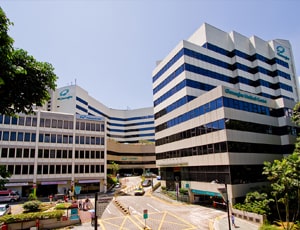
Gleneagles Hospital located in Napier Road, Singapore is accredited by JCI. Also listed below are some of the most prominent infrastructural details:

Types of Total Hip Replacement B/L in Star Hospitals and its associated cost
| Treatment Option | Approximate Cost Range (USD) | Approximate Cost Range (INR) |
|---|---|---|
| B/L Total Hip Replacement | 7518 - 11099 | 612027 - 930614 |
| Cemented Hip Replacement | 7435 - 9219 | 619409 - 757927 |
| Uncemented Hip Replacement | 8342 - 10260 | 687453 - 843849 |
| Hybrid Hip Replacement | 7996 - 9668 | 656804 - 798627 |
| Minimally Invasive Hip Replacement | 9252 - 11185 | 761095 - 923073 |
| Robotic-Assisted Hip Replacement | 10273 - 12240 | 839229 - 1010147 |
| Revision Hip Replacement | 11305 - 13922 | 932944 - 1161151 |
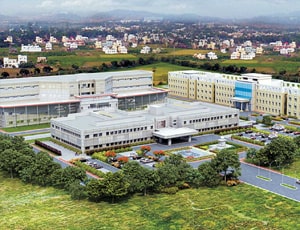
Types of Total Hip Replacement B/L in Global Health City and its associated cost
| Treatment Option | Approximate Cost Range (USD) | Approximate Cost Range (INR) |
|---|---|---|
| B/L Total Hip Replacement | 9016 - 13671 | 734492 - 1128642 |
| Cemented Hip Replacement | 9059 - 11344 | 726797 - 903548 |
| Uncemented Hip Replacement | 9921 - 12467 | 817990 - 1000598 |
| Hybrid Hip Replacement | 9397 - 11777 | 794559 - 962162 |
| Minimally Invasive Hip Replacement | 11184 - 13246 | 919239 - 1086026 |
| Robotic-Assisted Hip Replacement | 12202 - 14894 | 1018066 - 1194653 |
| Revision Hip Replacement | 13289 - 17171 | 1125209 - 1365177 |
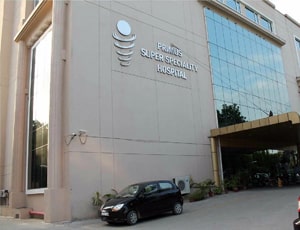
Types of Total Hip Replacement B/L in Primus Super Speciality Hospital and its associated cost
| Treatment Option | Approximate Cost Range (USD) | Approximate Cost Range (INR) |
|---|---|---|
| B/L Total Hip Replacement | 8155 - 12186 | 667207 - 1002438 |
| Cemented Hip Replacement | 8158 - 10125 | 668987 - 830561 |
| Uncemented Hip Replacement | 9159 - 11145 | 746263 - 918418 |
| Hybrid Hip Replacement | 8589 - 10674 | 707364 - 877415 |
| Minimally Invasive Hip Replacement | 10130 - 12181 | 830151 - 995683 |
| Robotic-Assisted Hip Replacement | 11180 - 13152 | 913392 - 1081402 |
| Revision Hip Replacement | 12170 - 15216 | 999799 - 1245985 |
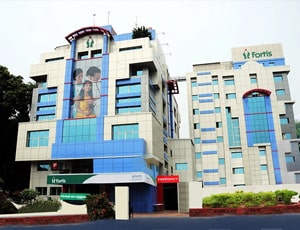
Types of Total Hip Replacement B/L in Fortis Malar Hospital and its associated cost
| Treatment Option | Approximate Cost Range (USD) | Approximate Cost Range (INR) |
|---|---|---|
| B/L Total Hip Replacement | 8142 - 12162 | 665213 - 1001182 |
| Cemented Hip Replacement | 8105 - 10175 | 667042 - 835057 |
| Uncemented Hip Replacement | 9103 - 11190 | 752708 - 916842 |
| Hybrid Hip Replacement | 8631 - 10662 | 706813 - 875898 |
| Minimally Invasive Hip Replacement | 10124 - 12188 | 836307 - 1000534 |
| Robotic-Assisted Hip Replacement | 11185 - 13133 | 912654 - 1080543 |
| Revision Hip Replacement | 12214 - 15252 | 997398 - 1242538 |
DOCTORS IN 9 SPECIALITIES
FACILITIES & AMENITIES
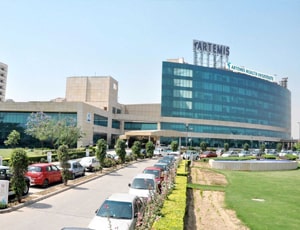
Types of Total Hip Replacement B/L in Artemis Health Institute and its associated cost
| Treatment Option | Approximate Cost Range (USD) | Approximate Cost Range (INR) |
|---|---|---|
| B/L Total Hip Replacement | 9090 - 13270 | 731081 - 1114347 |
| Cemented Hip Replacement | 8854 - 11211 | 725284 - 942383 |
| Uncemented Hip Replacement | 10131 - 12349 | 843879 - 1024839 |
| Hybrid Hip Replacement | 9421 - 11714 | 767365 - 974940 |
| Minimally Invasive Hip Replacement | 11026 - 13494 | 939783 - 1129495 |
| Robotic-Assisted Hip Replacement | 12104 - 14498 | 1037121 - 1208468 |
| Revision Hip Replacement | 13314 - 16811 | 1089557 - 1357108 |
DOCTORS IN 15 SPECIALITIES
FACILITIES & AMENITIES

Types of Total Hip Replacement B/L in Sterling Wockhardt Hospital and its associated cost
| Treatment Option | Approximate Cost Range (USD) | Approximate Cost Range (INR) |
|---|---|---|
| B/L Total Hip Replacement | 8130 - 12138 | 665994 - 994712 |
| Cemented Hip Replacement | 8110 - 10104 | 666592 - 829597 |
| Uncemented Hip Replacement | 9168 - 11115 | 746326 - 911978 |
| Hybrid Hip Replacement | 8644 - 10622 | 705177 - 877327 |
| Minimally Invasive Hip Replacement | 10108 - 12204 | 833593 - 999303 |
| Robotic-Assisted Hip Replacement | 11124 - 13247 | 916664 - 1083836 |
| Revision Hip Replacement | 12238 - 15275 | 994868 - 1250354 |

Types of Total Hip Replacement B/L in Medicana International Istanbul and its associated cost
| Treatment Option | Approximate Cost Range (USD) | Approximate Cost Range (TRY) |
|---|---|---|
| B/L Total Hip Replacement | 13228 - 20343 | 411016 - 618023 |
| Cemented Hip Replacement | 10272 - 15491 | 311380 - 467566 |
| Uncemented Hip Replacement | 12609 - 18257 | 379965 - 551316 |
| Hybrid Hip Replacement | 11168 - 17119 | 337007 - 503263 |
| Minimally Invasive Hip Replacement | 13610 - 20362 | 414710 - 599380 |
| Robotic-Assisted Hip Replacement | 15934 - 22279 | 474511 - 669653 |
| Revision Hip Replacement | 18139 - 24256 | 549556 - 757332 |
DOCTORS IN 10 SPECIALITIES
FACILITIES & AMENITIES
Total hip replacement surgery also called total hip arthroplasty, is a surgical procedure conducted to replace the damaged or diseased hip joint with an artificial joint or prosthesis. The hip prosthesis contains the following three components:
The two types of prostheses used in total hip replacement surgery include a.) cemented and b.) uncemented prostheses. A combination of both is sometimes used during the surgery, depending on the recommendation made by the patient.
Hip joint surgery is conducted in patients when other non-surgical and surgical alternatives fail to work and relieve the patient of terrible hip pain. A successful hip joint surgery ensures increased mobility, improved function of the hip joint, and pain-free movement.
Two types of total hip replacement surgery differ based on whether a single or both hip joints are replaced. Total hip replacement bilateral refers to the replacement of joints on both sides of the hips. This procedure is conducted when both sides are affected.
The surgeon may decide to operate both sides of the hips in a single surgery or they may schedule two different surgeries with a gap in between them. The surgical approach that the hip replacement surgeon chooses before the procedure depends on the patient's condition and the surgical team's experience. Two approaches can be used to conduct the procedure – minimally invasive and open surgery.
Minimally invasive hip replacement is a relatively new procedure that allows for minimal healing and recovery time and small incisions. Open surgery, on the other hand, involves the creation of a single large incision that increases recovery and healing time. Each of these approaches has its pros and cons.
Before the surgery, the hip replacement surgeon will give you general anesthesia or a sedative. You would receive an intravenous line in the arm or hand. The surgical area is cleaned with an antiseptic solution and an incision is made in the hip area.
The surgeon then removes the damaged part of the hip joint and replaces the joint with an artificial joint or prosthesis. The incision is closed with stitches or surgical staples and a drain is placed to remove fluid. The incision site is secured with a sterile bandage dressing.
During the procedure, the surgeon removes a part of the thigh bone including the head of the bone, and replaces it with the prosthesis. The surface of the acetabulum is first roughened so that the new socket implant can attach to it well. Usually, a majority of artificial joint components are fixed using acrylic cement. However, cementless fixation has gained a huge popularity in the last few years.
The hip replacement implants may have plastic, metallic, or ceramic components. Metal-on-plastic implants are the most commonly used for hip replacement. Ceramic-on-plastic and ceramic-on-ceramic are used in younger and more active patients. Metal-on-metal is rarely used in younger patients.
Ask your healthcare adviser for the best multiple options and choose the one that meets your expectations
On an average, Total Hip Replacement B/L in Switzerland costs about $32000. Total Hip Replacement B/L in Switzerland is conducted across several OECI, TEMOS certified hospitals.
Total Hip Replacement B/L package cost in Switzerland has different inclusions and exclusions. The top hospitals for Total Hip Replacement B/L in Switzerland covers all the expenses related to the pre-surgery investigations of the candidate. The treatment cost usually includes the expenses related to hospitalization, surgery, nursing, medicines, and anesthesia. There are many things that may increase the cost of Total Hip Replacement B/L in Switzerland, including prolonged hospital stay and complications after the procedure.
Total Hip Replacement B/L in Switzerland is offered by multiple hospitals across the country. Some of the best hospitals for Total Hip Replacement B/L in Switzerland include the following:
The recovery of the patient many vary, depending on several factors. However, on an average, patient is supposed to stay for about 28 days in the country after discharge. This duration of stay is recommended to complete all the necessary follow-ups and control tests to ensure that the surgery was successful.
There are certain additional cost that the patient has to pay apart from the Total Hip Replacement B/L cost. The extra charges may start from USD 50 per person.
Some of the cpopular cities in Switzerland that offer Total Hip Replacement B/L include the following:
After Total Hip Replacement B/L, the patient is supposed to stay for about 7 days in the hospital for recovery and monitoring. During the recovery, the patient is carefully monitored and control tests are performed to see that everything is okay. If required, physiotherapy sessions are also planned during recovery in hospital.
There are more than 2 hospitals that offer Total Hip Replacement B/L in Switzerland. These hospitals have propoer infrastructure as well as offer good quality of services when it comes to Total Hip Replacement B/L Additionally, these hospitals are known to comply with the international standards as well as local legal requirements for the treatment of patients.
The success rate of hip replacement surgery in Switzerland is about 96%. This is based on the surgical history of patients and the reviews. It is estimated that around 92% of the prosthesis used in the surgery in Switzerland generally last for above 10 years and 84% of them typically last for more than 22 years. A large variety of implants are available in Switzerland that lasts for at least 26 years. Some of the factors that affect the success rate of hip replacement in Switzerland are the overall health of the patient, Quality of implants used, quality of rehabilitation, type of implants used and post-surgical infections & complications.
A number of screening tests are performed before a candidate undergoes hip replacement surgery. The evaluation is crucial to make sure that there is no existing medical condition that can cause complications during surgery and recovery. After the evaluation process has been done, a committee consisting of transplant surgeons will then review the medical history and the test reports. Then, they will decide if the surgery is the suitable option for you. The following test will be performed:
The cost of single hip replacement in Turkey starts from around $32000. There are several factors that control the overall cost of treatment, such as
Hip replacement is one of the most popular orthopedic procedures around the world. Hip replacement in Switzerland is available across numerous hospitals scattered across different cities. People are recommended to go for hip replacement in Switzerland because the country offers advanced and state-of-the-art medical treatment at an affordable cost. The country also has some of the best JCI-certified hospitals and the level of care offered at the hospitals is commendable. Also, orthopedic surgeons in Switzerland are highly qualified as well as experienced. They are well-trained at the best medical institutes across the world and aim to stay abreast with the latest developments in the use of modern technology for orthopedic treatment.
Some of the best hospitals in Switzerland for Hip Replacement are given below: